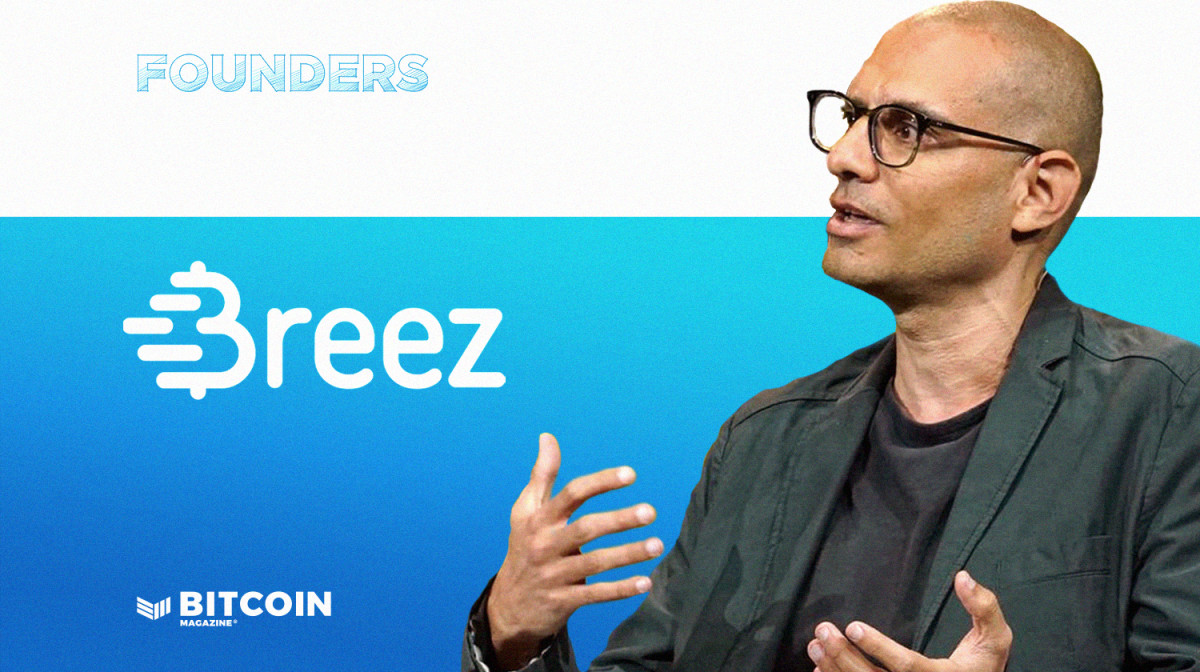Bitcoin’s Lightning Network in Every App: Breez CEO’s Vision


Founder: Roy Sheinfeld, Roei Erez, Jakob Slama
Establishment date: 2018
Headquarters location: remote
Amount of Bitcoin held in Treasury: Dozens stored in Breez Lightning nodes
Number of employees: 11
Website: https://breez.technology/
Public or private? private
Roy Sheinfeld says the era of orange peeling is over.
Sheinfeld, one of the three founders of Breez, a company that provides software development kits (SDKs) to institutions looking to leverage the Bitcoin Lightning Network, said attracting people to Bitcoin through education is key to expanding the Bitcoin community. I believe it was helpful. It will not be the driving force behind attracting the next generation of Bitcoin users.
“I took the orange pill. You’ve probably taken the orange pill. Everyone in the Bitcoin ecosystem right now probably has the orange pill. But I don’t think that circle is expanding, and I certainly don’t think it’s expanding fast enough,” Sheinfeld told Bitcoin Magazine. “What drives adoption – what drives people to change their behavior – is technology.”
That’s why software developer Sheinfeld is committed to making it easier for businesses to use the Lightning Network. He wants to see more apps and services use Lightning for payments, not just create more Lightning-related apps. Imagine, instead of developers creating more Lightning wallets, Spotify leverages Lightning to stream content to creators.
“I always use digital cameras as an example. “When digital cameras first hit the market, everyone started using them as replacements for film cameras, but human behavior didn’t change,” Sheinfeld said.
“It was only after digital cameras were integrated into mobile devices that human behavior changed. These days, you can’t eat a meal without taking a picture of your food before eating it. “It was a dramatic change in human behavior, and I hope that happens with Bitcoin as well,” he added.
“We want to change human behavior because the utility of Bitcoin is something that people cannot resist or use.”
And Sheinfeld is ideally positioned to help foster this change, as he has been iterating Lightning since the network’s inception.
Breeze’s History
Founded in 2018, Breez is as old as the Lightning Network itself.
“We were the first company to do business on the Lightning Network,” Sheinfeld said. “When the first mainnet transaction appeared on the Lightning Network, we founded Breez to help transition Bitcoin from a store of value to a medium of exchange.”
The Breez team started by launching the first Lightning wallet. This makes Breez the first Lightning Service Provider (LSP), a term Sheinfeld himself coined. Sheinfeld and co. It also brought the first version of Podcasting 2.0 to the market, allowing users to stream sats to their favorite podcasters, a service popularized by Fountain.
But over the past year and a half, Sheinfeld and the Breez team have been focused on developing the Breez SDK. As Sheinfeld said, “We think Lightning should be a necessity. “Everyone should be able to use Lightning if they want it.”
Breeze SDK
Breez SDK is a free, open source software (FOSS), non-custodial solution that can be used by any individual, company, or institution. It is powered by Blockstream Greenlight, which allows Breez to run end-user nodes in the cloud while keeping the service unmanaged, as private keys remain in the hands of the user.
The Breez SDK also allows users to exchange Bitcoin between the native chain and the Lightning Network, providing a fiat on-ramp from third-party providers.
For example, if an online retailer wants to accept Bitcoin payments via Lightning, they simply need to integrate the Breez SDK API from Breez GitHub into their app or website. This doesn’t take much time.
“What I can tell you from our experience working with partners is that it takes a few days to add Lightning payments to your application,” Sheinfeld said. “For some partners it takes longer, several weeks, but this is not due to the complexity of using the Breez SDK. This is about the user experience we want to provide when integrating Lightning payments.”
Sheinfeld also added that “using the API programmatically is very simple for any type of developer,” making it clear that Breez is designed to be free and open source to reflect the characteristics of Bitcoin. And this design is still profitable for Breez because the company makes money when end-user payments pass through the node.
Companies and products like Relai, BitBox, and Blockstream Green are currently using the Breez SDK, but I wonder why more companies and products aren’t using this new technology.
What’s hindering Breez SDK adoption?
Breez provides a convenient way to integrate Lightning into your apps, so why aren’t more companies taking advantage of it?
In Sheinfeld’s view, the problem is how most people still perceive Bitcoin.
“I think a lot of people still don’t believe in Bitcoin as a medium of exchange,” Sheinfeld said. Even some Bitcoin users do the same.”
“With companies like Breez lowering the barrier to entry and helping developers integrate Lightning, this issue is no longer a technical issue,” he added.
“What we want to do is get enough bottom-up traction from the partners that we’re working with and create a Bitcoin platform where the norm that isn’t familiar with Bitcoin, when they hear ‘Bitcoin’, they understand, ‘Okay, Bitcoin is Bitcoin.’ It’s about crossing the credibility gap. money. You can send and receive Bitcoin.’”
Sheinfeld went on to share how to start crossing that gap by first creating “an ecosystem of Bitcoin-centric applications that allow you to interact with Bitcoin as a form of money.”
Instead of trying to convince people that BTC is the best form of money, he believes that BTC will prove itself by competing with fiat currencies and other cryptocurrencies. To kick-start this race, he would like to see Lightning integrated into multi-coin wallets and eventually into fintech applications.
“There’s no reason PayPal or Revolut wouldn’t integrate Lightning,” Sheinfeld said.
“Once we have penetrated all these types of exchange service mediums, we are ready to take the next step in integrating Bitcoin into mainstream applications,” he added.
“My period is 10 years. “I’d like to see mainstream applications like Uber or Spotify integrate Lightning in the next 10 years.”
Avoid regulatory scrutiny
A week before I spoke with Sheinfeld, Phoenix Wallet, one of the most popular Lightning wallets on the market today, decided to stop offering its services to U.S. customers, fearing an increased regulatory crackdown on self-custodial wallets as a result of the U.S. State Department. I decided. The Ministry of Justice has arrested Samourai Wallet developer.
When I asked Sheinfeld if he was nervous that U.S. regulators might take on Breeze next, he calmly replied, “No,” before offering his reasoning.
“To be very clear, self-managed wallets are allowed in the United States,” Sheinfeld said. “Self-policing is the worst thing that can happen. “It should be self-regulating, but there is no need to take a more extreme side than the law itself,” he said.
He then explained that self-storage wallet manufacturers do not need to obtain a remittance business license or financial service business license.
“Breez does not control user funds,” Sheinfeld emphasized.
Lightning FUD acknowledged
Many in the Bitcoin space consider the Lightning Network to be a failure due to the slow adoption of the network.
Sheinfeld argues that some of the criticism is valid.
“We deserve Lightning FUD,” Sheinfeld said.
“There is good marketing and there is bad marketing. Bad marketing is selling something that doesn’t exist. Lightning is the magic solution to all Bitcoin problems: infinite scalability, free transactions, and perfect UX. “No such thing exists,” he explained.
“We deserved the backlash we received because we did a poor job of explaining Lightning in the early days of the network and created a hype that the technology could not live up to.”
Sheinfeld went on to say that he is optimistic about the role Lightning will play as new technologies are introduced to Bitcoin.
“If you look at the current technology landscape (Cashu, Fedi and Bitcoin Layer 2 solutions), these different solutions will all interoperate with each other using Lightning,” he said.
What’s next for Breeze?
In the coming weeks, Breez will launch a business-to-business (B2B) marketing campaign targeting businesses that are currently unaware of the power of Bitcoin and Lightning.
“Marketing is fundamentally about bridging the gap between the power of technology and the usefulness of technology,” Sheinfeld said. “If people can’t bridge that gap on their own, someone needs to help them bridge that gap, and that requires good marketing.”
And Sheinfeld is confident that the time has come for Breez to start marketing and offering its services to companies outside the Bitcoin space.
“For too long we’ve been just in the Bitcoin community,” Sheinfeld said.
“We need to get out of the bubble and start offering products across ecosystems,” he added.
“Cryptocurrency solutions need to be Lightning-aware. Fintech solutions need to be Lightning-aware. Mainstream applications need to be Lightning-aware. That’s what we’re going to focus more on in the future. .”



